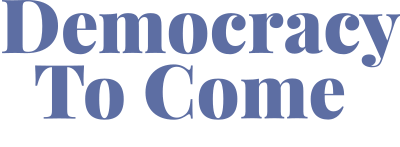In 1995 Robert Putnam wrote a fascinating and highly influential essay called Bowling Alone. Within this, and the subsequent book published in 2000, Putman documented the growing loneliness and disconnection of individuals in American society, highlighting an alarming decline in social capital. In the 1950s and 60s, Putnam argued, it was common for men to finish work and join friends in leisure activities such as bowling leagues where they would socialise and perhaps make further plans to meet up with their respective families at weekends. Drawing on a huge amount of data, he goes on to show that since the 1980s there had been a steep drop in these kinds of social activities and that due to a variety of reasons people were spending time alone (“bowling alone”) with dire consequences for both individuals (loneliness, depression) and wider democratic society (decline in civic participation). If anything, since the publication of Putnam’s book, the situation has become even worse with things like cuts to public services and a rise in the use of technology within the home, only exacerbating the decline of community and a sense of social connection.
Elderly people – particularly those with weak or no family ties – have found themselves extremely vulnerable to this trend in Western societies. There are reports of extreme loneliness of the elderly, with widowed or otherwise single people finding themselves cut off from the rest of the world. The charity Age UK have suggested that over two million people in England over the age of 75 live alone and quite staggeringly, more than a million older people go longer than a month without speaking to family, friends or even a neighbour. Meanwhile, in care homes, the elderly find themselves in environments where they have some semblance of community but are still too often neglected through privatised systems driven by a profit motive rather than a motive of helping the elderly live out their final years with dignity and a sense of connection with those around them.
Our most recently published article asks us to imagine an alternative scenario where we have the means to challenge the status quo. A situation in which a group of elderly people consciously decide to ask themselves: how would we like to grow old together? In doing so our research explores what happens when a large group of retired men and women decide to build and sustain a supportive co-housing community and adopt democratic forms of governance to help them make decisions in the process of doing so. From the plot of land they decide to build houses on to the type and colour of the timber they use to build them; from the design of the communal building to who maintains the gardens on a Tuesday afternoon. We ask how does sociocracy – a form of consent-based decision making – help them with this? and what kind of challenges did they face over the years in coming together to embark on this mission and in adopting this form of governance?

Our article, “Governing for the Common Good”, is published in Voluntas with my colleague, Prof. Daniel King, and it explores the possibilities of sociocracy in non-profit organizations. It emerges from a long-term project on workplace democracy funded by the ESRC (which this website is named after and funded by!) and continues our work at trying to understand the possibilities and barriers of democratic organizing. The article can be found here and the abstract is below:
Within nonprofit organizational studies, there has been a long-standing interest in democratic governance as ways of building political participation, civic skills and fostering inclusion. While established approaches to democratic governance have many benefits, existing research points to numerous challenges, including apathy and oligarchization. This paper explores an alternative form of democratic governance, sociocracy. Sociocracy, sometimes called dynamic governance, is organized around four key elements: circular hierarchy, consent-based decision-making, double linking, and practices to foster inclusivity and voice, a unique blend which distinguishes it from other forms of democratic governance. This article explores the implications on workplace democracy that a nonprofit organization experienced when limiting it. We find that sociocracy offers many benefits, including empowering members and reducing the risk of domination, and also highlights the many challenges that can accompany the implementation of sociocracy, particularly how four forms of inequality contribute to those challenges.
Let me know what you think of the article below (constructive critical comments very welcome!) and tell us how you think you would get on in a democratic community of this kind.





